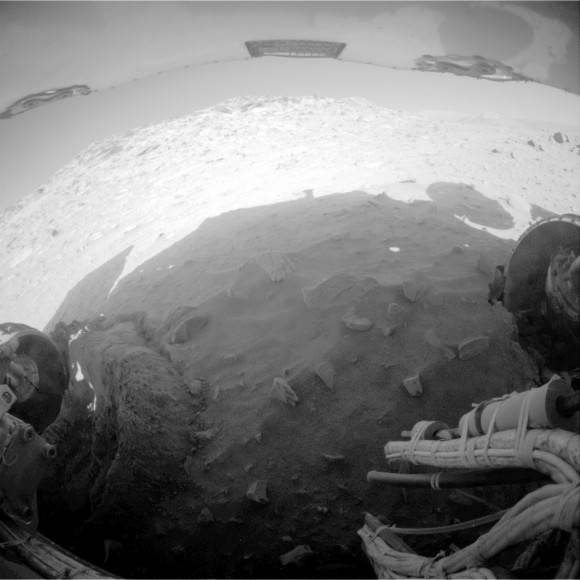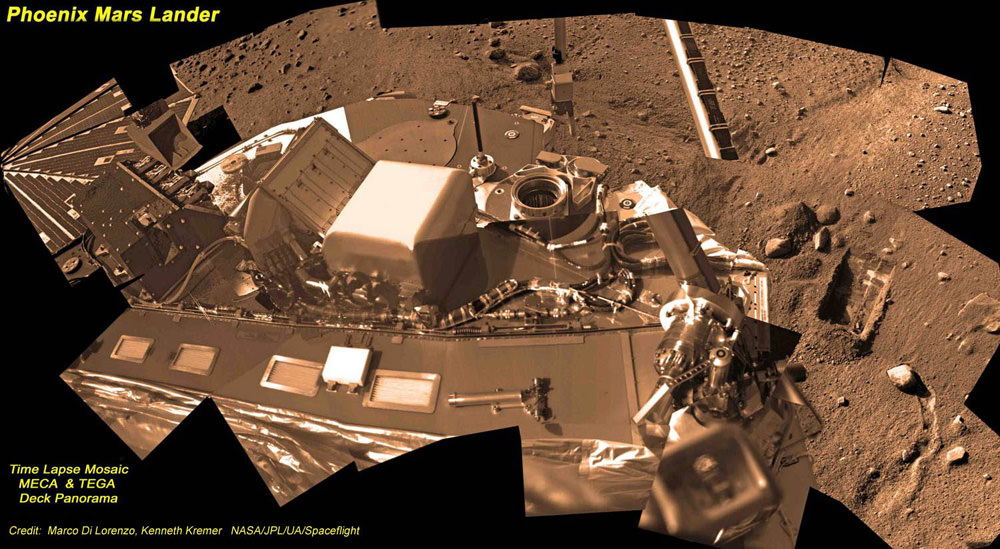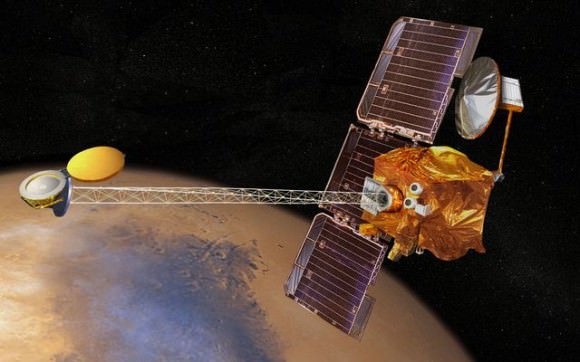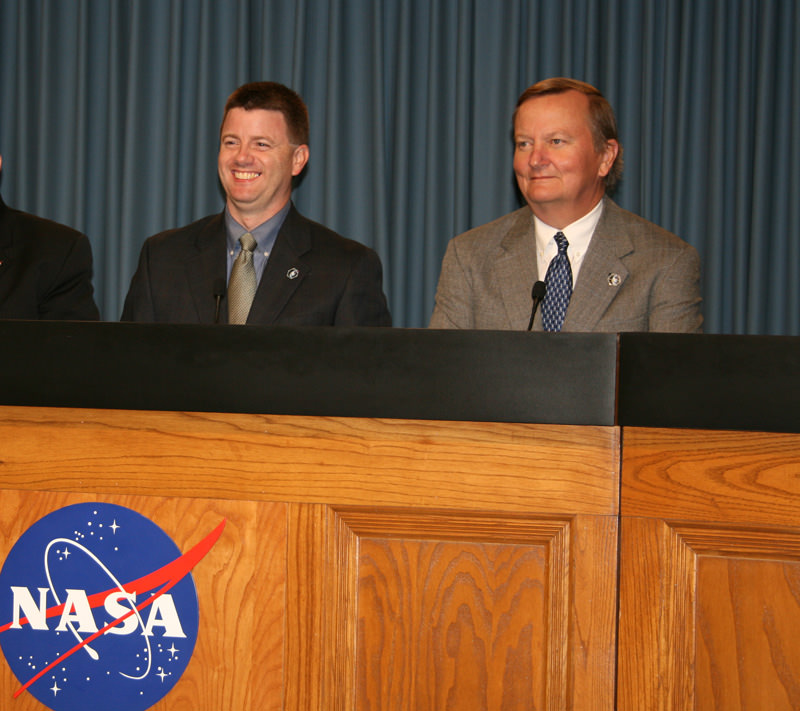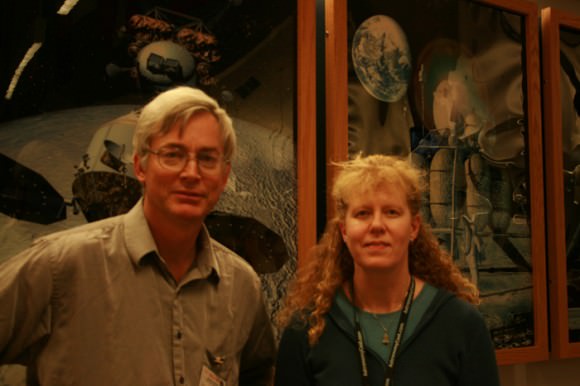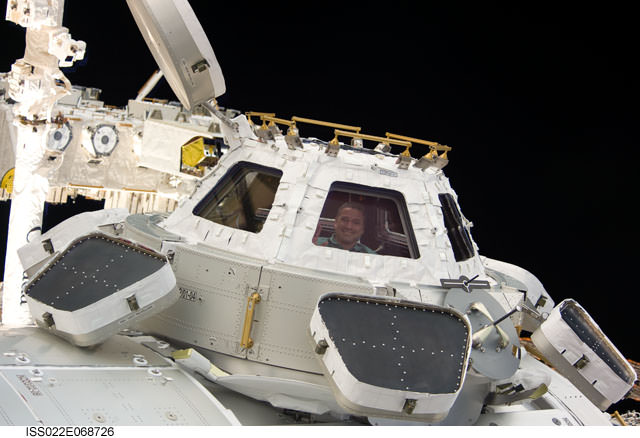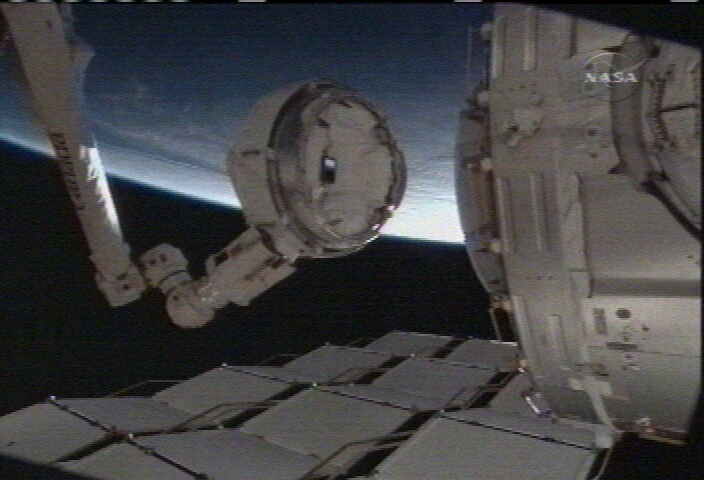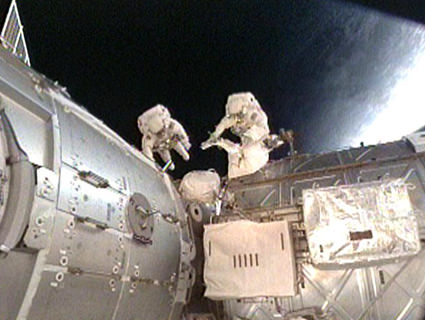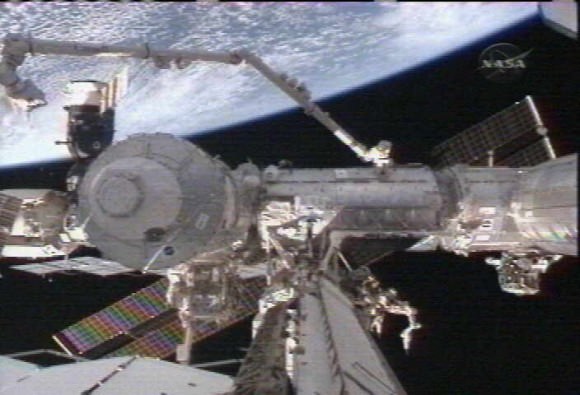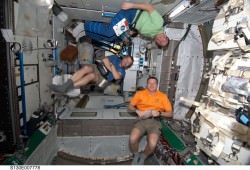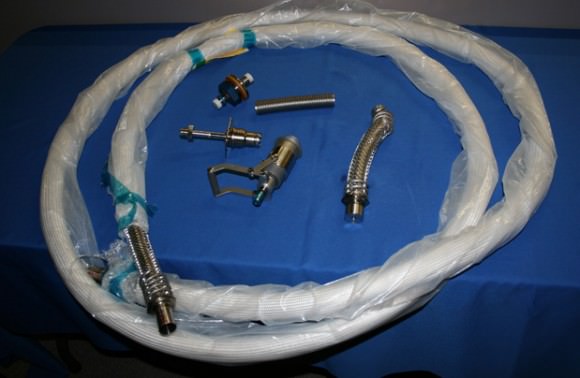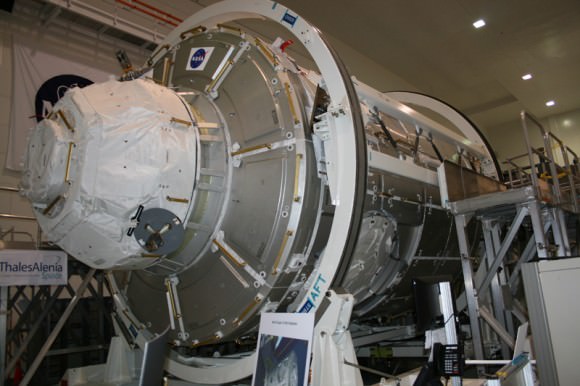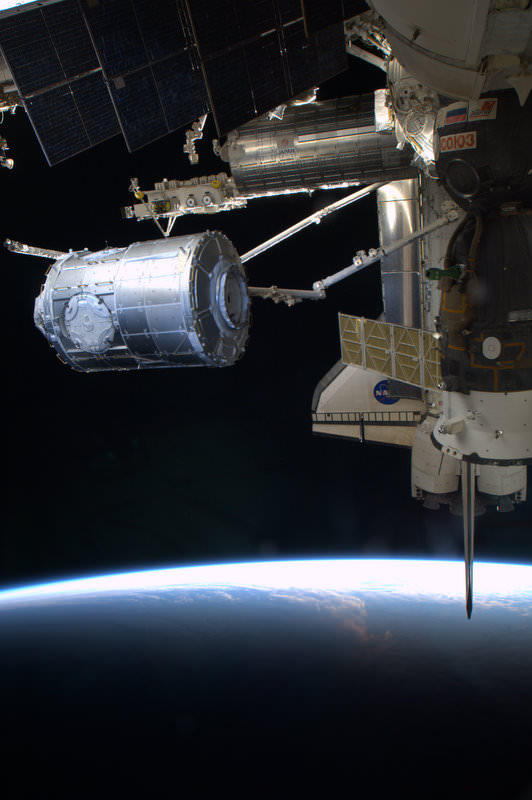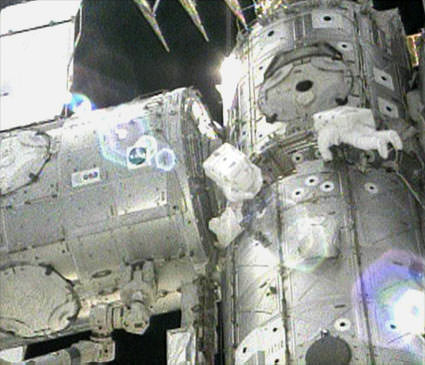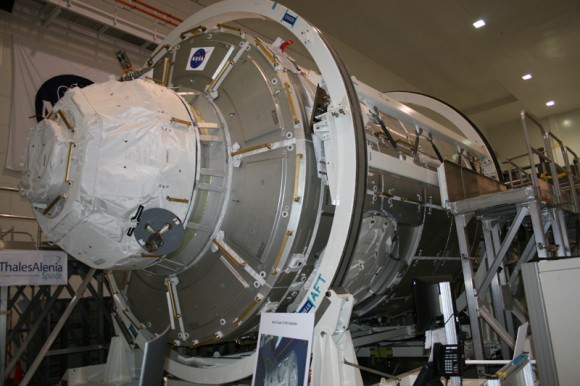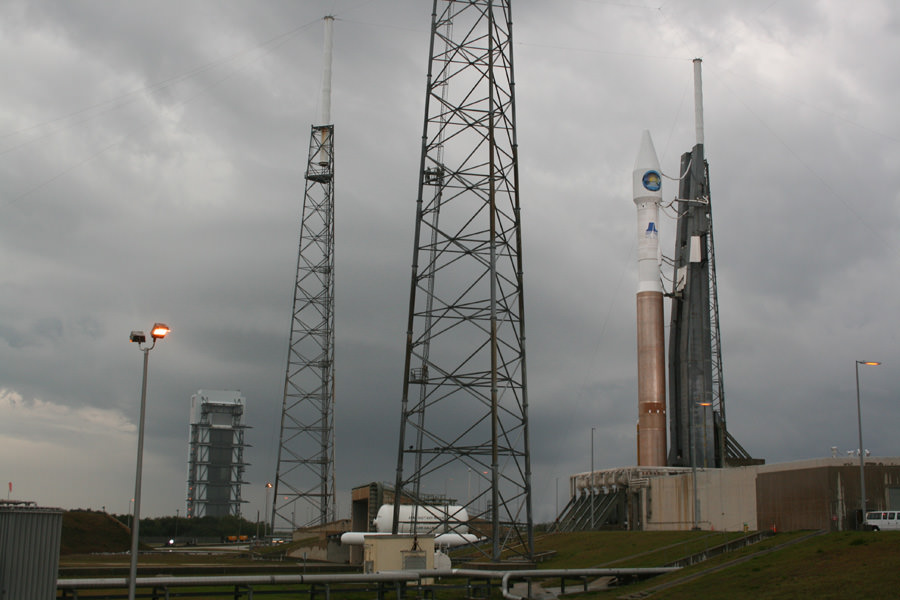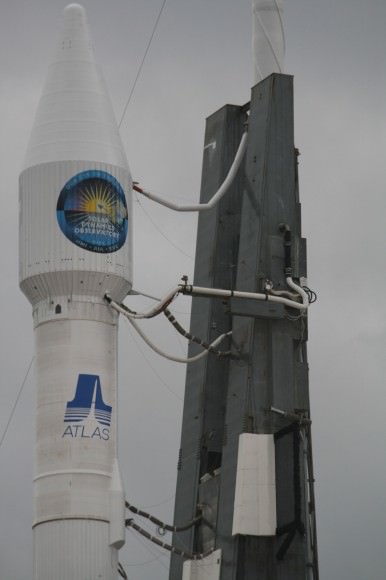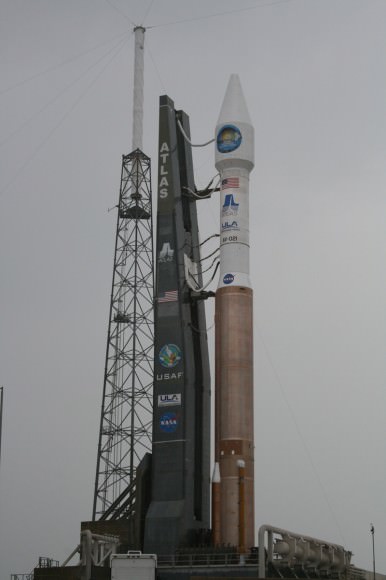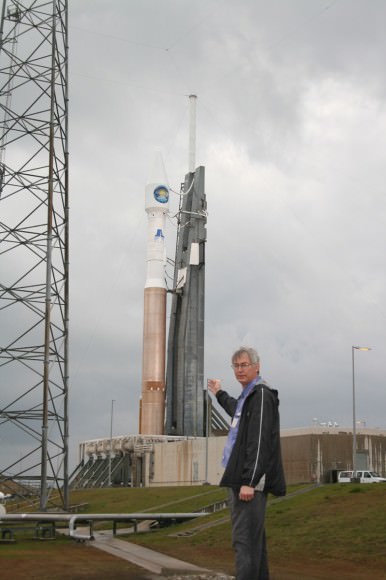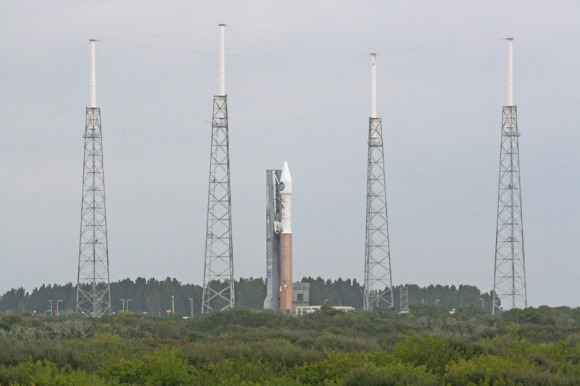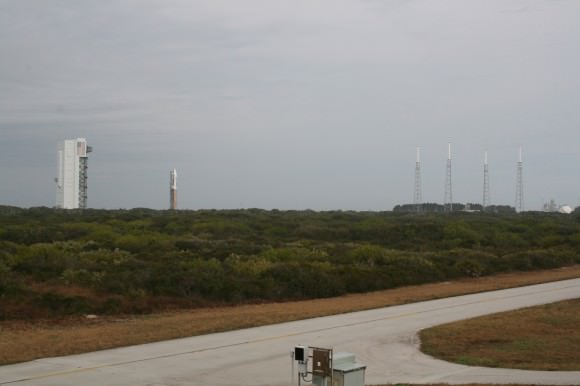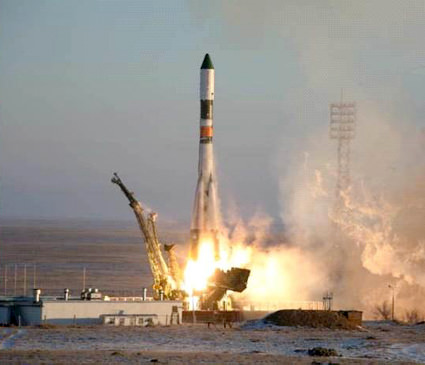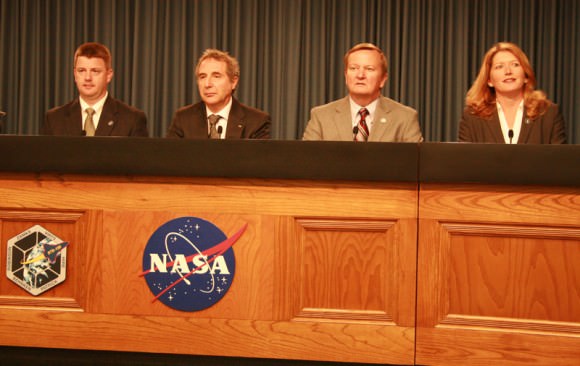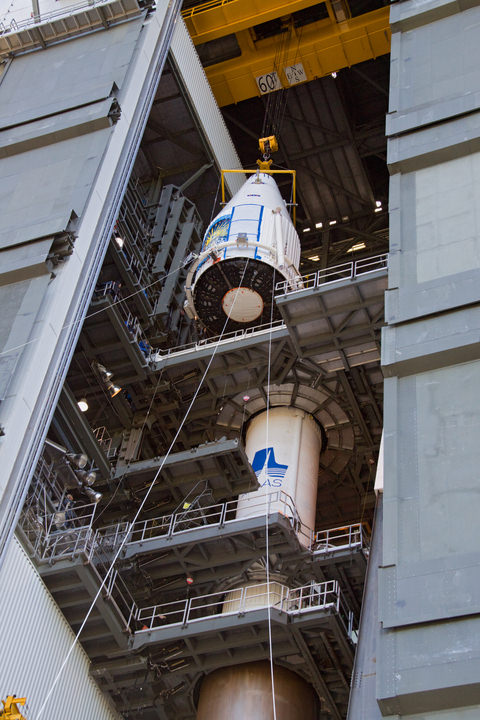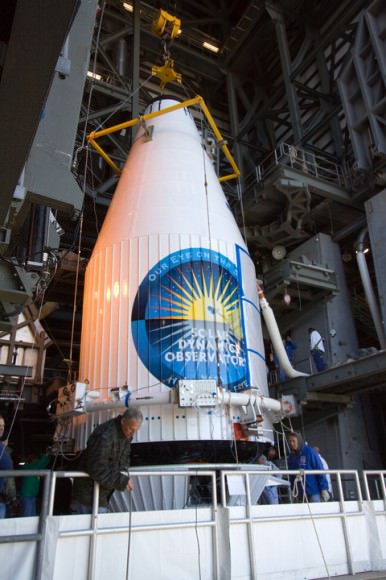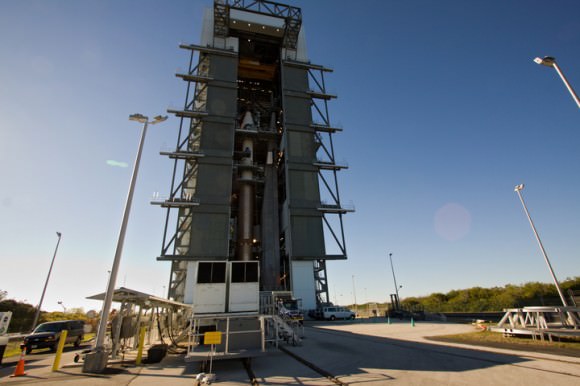[/caption]
The plucky Mars rover ‘Spirit’ may yet rove again !
She’ll just have to outwit and outlast the unavoidably harsh cold and desperately low power levels of the looming winter in Mars southern hemisphere. Rather long odds to be sure – but she’s done it before. Remember – at this moment on Sol 2192, Spirit is 75 months into her 3 month mission ! That’s 25 times beyond her “warrenty” as Rover Principal Investigator Prof. Steve Squyres of Cornell University is extremely fond of saying.
Spirit has been stuck in a rut since becoming mired in a sand trap of soft soil in April 2009. While driving on the western edge of ‘Home Plate’, she unknowingly broke through a hard surface crust (perhaps 1 cm thick) and sank into hidden soft sand beneath. Her wheels churned, sinking deeply – and became embedded in the sand trap at the place called ‘Troy’.
See the underbelly mosaic above, created by Marco Di Lorenzo and Ken Kremer, to get a glimpse of the predicament Spirit lurched into with her sunken wheels. Note: we have significantly enhanced and stretched the mosaic to extract out hard to see details.
As luck would have it, “Troy is a great place to be stuck. It’s like getting stuck in front of Disneyland”, says John Callas the Mars Rover Project manager at the Jet Propulsion Laboratory.
Spirits wheels are buried in sulfate-rich Martian soil. “The sulfate deposits formed by aqueous [water-related] processes when volcanism was active at this area dubbed Home Plate”, says Roy Arvidson, the deputy Rover Principal Investigator. “Spirit has uncovered evidence for two timescales of water related processes”.
“The Troy area is one of the most scientifically interesting ones that we’ve found the whole mission, and we rarely have enough time to study something this thoroughly. So we’re putting that to good use”, Squyres told me.
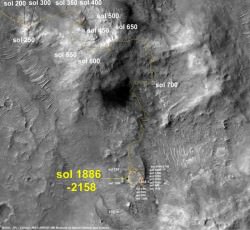
Remarkably, just as Spirit was concluding her escape efforts and being put into her “stationary” winter parked position to achieve a more optimal tilt for power generation, she finally managed to move about 34 centimeters (13 inches) toward the south southeast in a series of drives beginning on Sol 2145 (Jan. 15, 2010). Her final movement was on Sol 2169 (Feb. 8, 2010). The left-rear wheel even moved out of a rut that it had dug into back in April 2009.
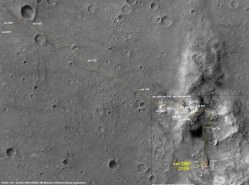
Given that Spirit did move 13 inches in the final drive attempts, I enquired whether NASA is reevaluating to try more driving IF she survives winter ?
Yes.
“The rover team does plan to try driving Spirit out of the immediate sand trap if the rover survives the winter. That was always a possibility”, Guy Webster informed me. He is the Public Affairs Officer at the Jet Propulsion Laboratory which manages the Mars rover project for NASA. Webster cautioned that, “With only four working wheels, the expectation is that even if Spirit gets out of Troy, the rover will not be able to rove significant distance, but might reposition itself to reach different targets in the immediate vicinity”.
Due to the extremely low power levels, the team is implementing plans to minimize energy usage by shutting down almost all functions except keeping a master clock running and checking its power status periodically until it has enough power to reawaken. Even communications will only be on an sporadic basis.
As of Feb. 23, the power output was down to 163 watt-hours. That compares to roughly 900 watt hours at landing. Earlier in the mission, “the line of death” was considered to be in the 200-250 watt hour range. Now, out of necessity, the team has developed ways to operate the rover on somewhat less power.
To get an idea of just how deeply Spirit was embedded and better evaluate her chances to escape, the team seized on an idea that was completely different. For the very first time, they commanded Spirit to carefully maneuver the robotic arm to peek underneath the rover and image her underbelly using the microscopic imager (MI) mounted at the end of the arm’s ‘hand’.
“We used the MI in a new way, because we have no bellycam”, explained Callas.
This action was outside the design envelope of the arm and not previously contemplated partly because the MI is a short focuser, built to focus on objects only 6 centimeter (2.4 inches) away – as well as concerns for damaging the rover and arm assembly. Nonetheless it was hoped that the expected fuzzy pictures would clarify the situation somewhat and perhaps elucidate clues about the wheels and terrain.
Indeed, the underbelly images from Sol 1925 in June 2009 revealed significant new details on how deeply the wheels had sunk and also discerned an upward pointing rock, possibly in contact with the rovers belly. See our mosaic (above) assembled from the MI images. If the rover was caught on the rock, the wheels could be spinning aimlessly if not in firm contact with the soil and thereby obstruct potential escape movements.
At the time of her embedding, Spirit was making great progress towards her next science targets, ‘Von Braun’ mound and the ‘Goddard’ depression in hopes of further elucidating the historical record of flowing liquid water in the Columbia Hills region where Spirit safely landed on Jan 3, 2004.
‘Von Braun’ is the intriguing feature some 100 meters distant at the top left of the mosaic (below) created by Ken Kremer and Marco Di Lorenzo for Spaceflight Now. ‘Troy’ is located approximately in the left of center foreground of the mosaic which was assembled from images taken by the Pancam imager just a few sols – martian days – before she became stuck. Pancam is bolted to the top of Spirits head like mast.
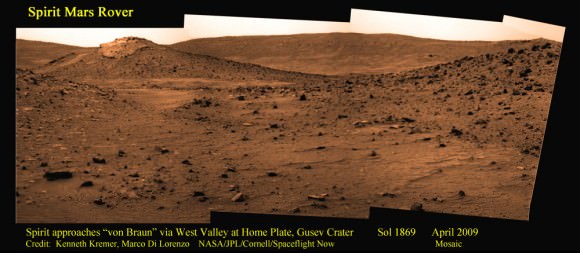
Teams had spent many months developing and testing numerous drive strategies to escape by using nearly identical replicas of the rovers at a test bed at the Jet Propulsion Lab. They solicited ideas worldwide from outside experts. No clear answers emerged, according to Project manager John Callas.
At last Spirit was commanded to move her 5 still functioning wheels. The 6th wheel had broken long ago after climbing down from Husband Hill (see our mosaic below). After a somewhat hopeful start, actual progress could only be measured in millimeters of movement. And her wheels began to sink deeper. Then another wheel broke, leaving only 4. Thus an already desperate situation became much worse with diminished wheel capacity. At last she moved that last foot, slightly improving her chances. And that’s the State of Spirit today.
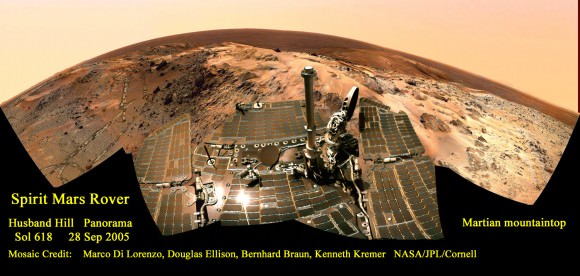
The solar powered Spirit is now tilted unfavorably, about 9 degrees to the south. The team stove mightily to obtain the desired northward tilt to achieve a better attitude for generating energy from the sun in the northern Martian sky.
Only time will tell the outcome. Let’s pray for clear skies for Spirit.
Squyres has often been quoted to say, “Never bet against the rovers. Those who have bet against the rovers have been repeatedly proven wrong !”
“We’re not giving up on Spirit !”
Earlier Mars articles by Ken Kremer:
Phoenix Still Silent as Martian Ice Recedes
If Phoenix Arises, Science could flow quickly
Mars 2016 Methane Orbiter: Searching for Signs of Life
